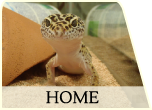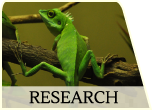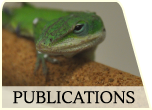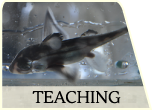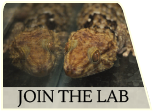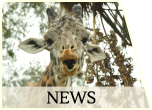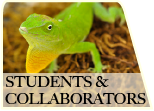Kathleen L. Foster, Ph.D.
Assistant Professor of Biology, Ball State University


 Click here for my CV (opens in new tab)
Click here for my CV (opens in new tab)




We are looking for enthusiastic and motivated people to join the lab! We are especially looking for a postdoctoral researcher (see ad) and Ph.D. students (see ad). Interested applicants should explore the content on this page, in particular the "Join the Lab" tab above, for more information about the lab's research interests and exciting opportunities and available resources.
I am passionate about education and inspiring a love of science and curiosity about the natural world in people of all ages. My personal research interests lie in understanding the biomechanical and physiological mechanisms underlying the movement of animals. Specifically, I am interested in muscle function and how it is affected by ecological demands placed on it. I use an integrative approach, which bridges the fields of functional morphology, ecophysiology, comparative biomechanics, and evolution to provide an essential, mechanistic-driven approach to understanding the physiological and ecomorphological mechanisms underlying both aquatic and terrestrial systems. I am also interested in how modern statistical tools (e.g. machine learning methods) can not only help detect and quantify coordination of limbs and muscles, but also classify discrete locomotor behaviors.
| Address: |
Office: Foundational Sciences Building 222 Lab: Foundational Sciences Building 263 Department of Biology Ball State University 1600 Ashland Ave. Muncie, IN, 47306 |
klfoster@bsu.edu |
Research
My research program examines the morphological and physiological mechanisms underlying ecological communities and the role that factors both intrinsic and extrinsic to muscle function play in shaping the evolution of complex species-environment interactions. Muscles, the primary drivers of locomotor behaviors, are complex, hierarchical structures whose ultimate function and performance is defined by the integration of intrinsic suites of morphological and physiological factors with extrinsic factors of other muscles and systems within the body. Further, they power locomotion within the context of highly heterogeneous environments. By integrating hierarchies of data collected across morphological, biomechanical, physiological, and ecological disciplines, we can gain a powerful understanding of the mechanisms underlying behavioral specializations, the limits to conditions where muscles can be effective, and the mechanisms by which muscles become better at performing a behavior or handling novel environmental challenges.
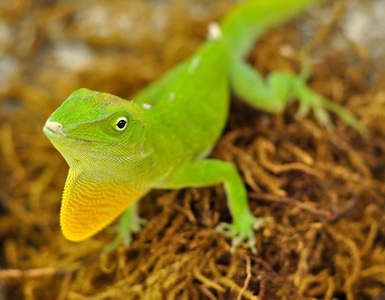
- Subtle ecomorphological systems – Subtle ecological challenges involved in shaping ecomorphological systems, such as those exemplified by skinks and Caribbean Anolis lizards, can be useful in characterizing the role of biomechanics in shaping ecological communities. Building on my previous work in skinks and Anolis lizards, we use a comparative approach to examine the role of muscle morphology, activation patterns, and contractile properties in shaping the ecomorph structure in Anolis lizards.
- Functional Morphology and Biomechanics through Ontogeny – Juveniles of many species often encounter significantly higher predation pressure because they are smaller, cannot escape as quickly, are more clumsy, and lack both the experience and ability to compete with adults for the more preferable, safer habitats. These challenges make rapid growth a desirable and beneficial trait in many species. However, it is unclear how morphology, physiology, and locomotor performance change through development and what mechanisms help juvenile lizards successfully perform locomotor behaviors through the most vulnerable life stages. Our lab, in collaboration with Prof. Selvitella, a mathematician/ statistician (Purdue University Fort Wayne), aims to address this gap by applying time series methods to morphological and biomechanics datasets collected repeatedly through development in lizards.
- Mathematical modeling of neuromuscular control – I have recently become interested in the use of machine learning methods (e.g. neural networks) to hypothesize and test links between disparate but related datasets. In particular, my lab investigates the strength of the relationship between neuromechanical control and locomotion by attempting to predict a landscape of potential neuromuscular signals from observed locomotor behaviors. This work, in collaboration with Prof. Selvitella, may have a large impact in the field by providing concrete, testable hypotheses to direct future research.

- Electromyography (EMG) - A method that uses electrodes implanted into muscles to measure their in vivo electrical activity during locomotion.
- Sonomicrometry - A technique in which small, piezoelectric crystals are implanted into muscles to monitor changes in muscle fascicle length as an animal moves.
- In situ/in vitro muscle physiology - These muscle preps allow us to explore force-length and force-velocity curves of whole muscles or individual muscle fibers.
- High Speed Video - This is essential for capturing and analyzing fast animal movements.
- Particle Image Velocimetry (PIV) - A technique which allows the visualization of fluid flow through illumination of neutrally buoyant particles with a laser.
- Machine Learning Methods - A suite of modern statistical techniques for analyzing complex multivariate datasets.
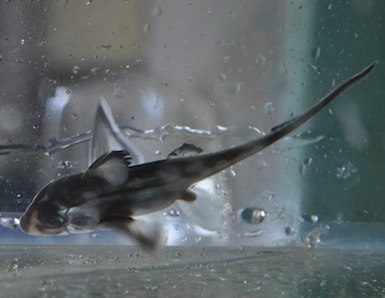
Publications
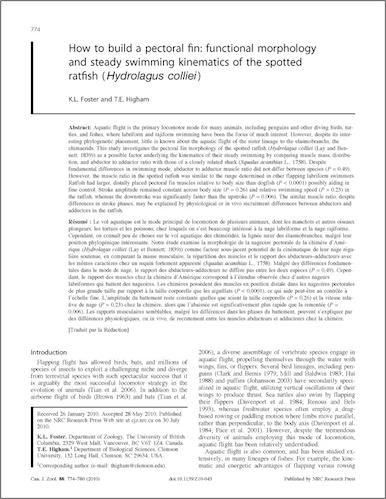
- Selvitella, A.M. and Foster, K.L. (2023). On the variability and dependence of human leg stiffness across strides during running and some consequences for the analysis of locomotion data. Royal Society Open Science 10, 230597. link.
- Lutek, K., Foster, K.L., and Standen, E.M. (2022). Behaviour and muscle activity across the aquatic-terrestrial transition in Polypterus senegalus. Journal of Experimental Biology 225, jeb243902. link.
- Selvitella, A.M. and Foster, K.L. (2022). The spring-mass model and other reductionist models of bipedal locomotion on inclines. Integrative and Comparative Biology 62, 1320-1334. link.
- Foster, K.L. and Selvitella, A.M. (2022). Transfer of Anolis locomotor behavior across environments and species. Integrative and Comparative Biology 62, 774-790. link.
- Foster, K.L. and Selvitella, A.M. 2021. On the relationship between COVID-19 reported fatalities early in the pandemic and national socio-economic status predating the pandemic. AIMS Public Health 8, 439-455. link.
- Selvitella, A.M. and Foster, K.L. 2021. A higher-order Taylor expansion of the initial trajectory of COVID-19 cases and deaths via Bayesian hierarchical models: A toy problem and possible public health insights. Proceedings of the ICLR 2021 Workshop on AI for Public Health. pdf.
- Foster, K.L. and Selvitella, A.M. 2021. Government measures against the COVID-19 pandemic must be determined according to the socio-economic status of the country. Proceedings of the ICLR 2021 Workshop on AI for Public Health. pdf.
- Selvitella, A.M. and Foster, K.L. 2021. Bayesian detection and uncertainty quantification of the first change point of the COVID-19 case curve in the Midwest: Timeliness of non-pharmaceutical interventions. Proceedings of the ICLR 2021 Workshop on AI for Public Health. pdf.
- Selvitella, A.M., Carolan, L., Smethers, J., and Foster, K.L. 2021. A spatio-temporal investigation of the growth rate of COVID-19 incidents in Ohio early in the pandemic. The Ohio Journal of Science 121, 33-47. link
- Foster, K.L. and Selvitella, A.M. 2020. Learning the locomotion behaviour of lizards transfers across environments. Proceedings of the ICML 2020 Workshop on Computational Biology. pdf. presentation.
- Selvitella, A.M. and Foster, K.L. 2020. Societal and economic factors associated with COVID-19 indicate that developing countries suffer the most. Technium Social Sciences Journal 10, 637-644. pdf.
- Foster, K.L., Lutek, K.K., and Standen, E.M. (In revision). Neuromuscular control and mechanical constraints during an amphibious transition in Polypterus senegalus.
- Foster, K.L., Garland, T. Jr., Schmitz, L, and Higham, T.E. (2018). Skink ecomorphology: forelimb and hind limb lengths, but not static stability, correlate with habitat use and demonstrate multiple solutions. Biological Journal of the Linnean Society 125, 673-692. pdf
- Foster, K.L., Dhuper, M., and Standen, E.M. (2018). Fin and body neuromuscular coordination changes during walking and swimming in Polypterus senegalus. Journal of Experimental Biology 221, 1-13. pdf
- Foster, K.L. and Higham, T.E. (2017). Integrating gastrocnemius force-length properties, in vivo activation, and operating lengths reveals how Anolis deal with ecological challenges. Journal of Experimental Biology 220, 796-806. pdf
- Foster, K.L., Collins, C.E., Higham, T.E., and Garland, T., Jr. (2015). Determinants of lizard escape performance: decision, motivation, ability, and opportunity. In Escaping from predators: An integrative view of escape decisions, eds. W.E. Cooper, Jr. and D.T. Blumstein. chapter
- Foster, K.L. and Higham, T.E. (2014). Context-dependent changes in motor control and kinematics during locomotion: modulation and decoupling. Proceedings of the Royal Society B 281, 20133331. pdf
- Foster, K.L. and Higham, T.E. (2012). How forelimb and hindlimb function changes with incline and perch diameter in the green anole, Anolis carolinensis. Journal of Experimental Biology 215, 2288-2300. pdf
- Foster, K.L. and Higham, T.E. (2010). How to build a pectoral fin: Functional morphology and steady swimming kinematics of the spotted ratfish. Canadian Journal of Zoology 88, 774-780. pdf
Teaching
- Structure and Development of Vertebrates (ZOOL 330), Spring 2020-present, every semester.
- Ecological Methods (BIO 316), Fall 2020-present, every fall semester.
- Principles of Biology 2 (BIO 112), Spring 2020.
- Biology of Marine Fishes, Bamfield Marine Sciences Centre, Vancouver Island, Canada, Summer 2019. Involved in course design, planning and executing laboratory and field activities, assisting students with independent projects, and grading.
- Animal Behavior (BIOL 160), University of California, Riverside, Riverside, California, Spring 2015. Responsible for leading and grading four discussion sessions a week.
- Functional Anatomy of the Vertebrates (BIOL 161B), University of California, Riverside, Riverside, California, Winter 2015. Responsible for instructing and grading two laboratory sessions a week.
- Functional Anatomy of the Vertebrates (BIOL 161A), University of California, Riverside, Riverside, California, Fall 2014. Responsible for instructing and grading two laboratory sessions a week.
- Biology of Marine Fishes, Bamfield Marine Sciences Centre, Vancouver Island, Canada, Summer 2011. Involved in planning and executing laboratory and field activities, assisting students with independent projects, and grading.
- Human Physiology (BIOSC 316), Clemson University, January to May 2011. Responsible for instructing and grading two laboratory sessions a week.
- Comparative Physiology (BIOSC 475), Clemson University, August to December 2010. Responsible for instructing and grading two laboratory sessions a week.
- Biomechanics, Bamfield Marine Sciences Centre, Vancouver Island, Canada, Summer 2010. Involved in planning and executing laboratory and field activities, assisting students with independent projects, and grading.
Join the Lab!
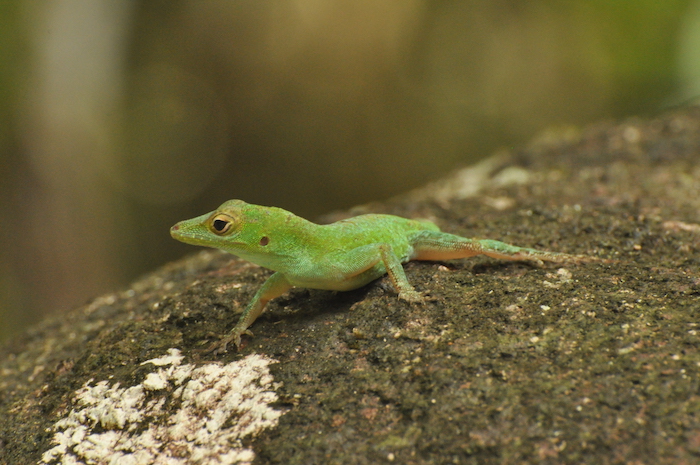 Interested in joining the lab?...
Interested in joining the lab?...
The Ecological and Comparative Biomechanics lab is looking for a postdoctoral researcher and enthusiastic, self-motivated Ph.D., Master's, and undergraduate students. Our lab seeks to create a diverse research environment focusing on the biomechanical and physiological mechanisms underlying animal locomotion, with the goal of understanding what processes govern the interaction between animals and their environment. Lab members are expected to contribute to the research goals of the lab, but are encouraged and assisted in shaping their own research interests within that scope.
Current research topics in the labCurrent topics in which lab members can pursue research include, but are not limited to:
- Ecomorphology/ecomechanics
- Biomechanics and functional morphology through growth and development
- Comparative muscle physiology
- Statistical and machine learning methods in biology
Lab members benefit from lab and BSU resources to become proficient in the use of research tools and techniques including:
- High-speed video
- Electromyography
- Force plates
- GIS
- Advanced computational/statistical methods
- Animal husbandry
We invite applications for a postdoctoral position in comparative biomechanics and functional morphology of lizards to begin in Spring 2024. The postdoctoral researcher will contribute to the experimental and statistical aspects of a large-scale, NSF-funded research project focusing on the data-driven development of the mathematical laws that govern morphology and locomotion through development. As part of this effort, the successful candidate will conduct biomechanical experiments and collect detailed morphological data of arboreal lizards as they grow from hatchling to adult-size. This position is particularly suited to a person who is excited by the prospect of learning and thinking about new ways to examine and quantify the connection between animal structure and movement.
Qualifications: Applicants must have completed a Ph.D. in Biology, Biomechanics, Functional Morphology, Engineering, or a related fields and should have excellent experimental and scientific communication skills with a strong record of peer-reviewed publications and conference presentations. Proficiency in computer programming/statistical software (e.g. R, Matlab, Python) is preferred.
Application Procedure and Deadline: Interested candidates should submit their CV (including a list of publications), a cover letter/letter of interest, and contact information for three references via the Ball State University application portal by December 3, 2023. See the full ad for detailed instructions.
Ph.D. Students (See ad)The BSU Environmental Sciences Ph.D. Program is an interdisciplinary program that spans multiple departments in the College of Sciences and Humanities. Although students in our lab will have a concentration in Biology, they will benefit from the interdisciplinary nature of the program through core courses in Ecosystem Ecology, GIS, Environmental Chemistry, and Environmental Geology.
Qualifications: Applicants must have completed a Master’s Degree in Biology, Engineering, or related fields, with a minimum GPA of 3.2. Prior experience with computer programming (e.g. R, Matlab, Python) is valuable, but not required.
Application Deadline: Both national and international students are encouraged to apply. The BSU deadlines for applications are December 25, 2023 (U.S. students) and November 15, 2023 (international students) for students wishing to begin their Ph.D. in the Spring Semester 2024 and August 5, 2024 (U.S. students) and June 15, 2024 (international students) for students wishing to begin their Ph.D. in the Fall Semester 2024.
Master's StudentsThe BSU Department of Biology has an excellent BSU Master of Science Program that involves a combination of coursework and independent research.
Qualifications: Applicants must have completed a Bachelor’s in Biology, Engineering, or related fields, with a minimum GPA of 3.00. At least one year of independent research experience (e.g. Honor's thesis or undergraduate student research project) is preferred. Prior experience with computer programming (e.g. R, Matlab, Python) is valuable, but not required.
Application Deadline: Both national and international students are encouraged to apply. The BSU deadlines for applications are December 25, 2023 (U.S. students) and November 15, 2023 (international students) for students wishing to begin their Ph.D. in the Spring Semester 2024 and August 5, 2024 (U.S. students) and June 15, 2024 (international students) for students wishing to begin their Ph.D. in the Fall Semester 2024.
Undergraduate StudentsOur lab is always looking for enthusiastic undergraduate volunteers. Students start by helping to look after the animals, which is a great way to get to know how we run things and see the research that is going on in the lab. As students gain experience and as their interest builds in the research going on in the lab, there may be opportunities to be more directly involved in research projects, sign up for research credits, and/or complete an Honors Theses.
Expectations: The amount of time spent in the lab will vary on a case-by-case basis, depending on student availability and responsibilities. However, to get the most out of the opportunity, a minimum of 3 hours per week is recommended.
Interested students should contact Dr. Kathleen Foster directly with unofficial transcripts, a brief CV/resume, and a description of why they are interested in the lab and what they hope to get out of their experience in the lab. Please write "Ecological and Comparative Biomechanics Lab" in the subject line of your email.
Still interested? Contact Dr. Foster!Prospective graduate students must contact the PI (klfoster@bsu.edu) to discuss their interest in applying to the lab. In your email, include the following information:
- A brief summary of your research experiences and interests
- A copy of your CV, including any presentations and publications (pending or otherwise)
- Please write "Ecological and Comparative Biomechanics Lab" in the subject line of your email.
News
- 2022/06/14: My first graduate student, Thomas Stroud, has just successfully defended his Master's Thesis entitled "Three-dimensional hind limb kinematics of water-running in Basiliscus plumifrons in response to different flow regimes"! Congratulations Thomas!
- 2022/06/10: We just finished running theWorkshop in Mathematical and Computational Biology 2022! It was a huge success! We had a fantastic selection of keynote speakers, contributed talks, and posters, and 279 participants registered from 6 continents, 49 countries, and 198 institutions!
- 2022/06/09: The proof of our recent paper on "The Spring-Mass Model and Other Reductionist Models of Bipedal Locomotion on Inclines" is available on Integrative and Comparative Biology! Check it out here!
- 2022/04/22: The proof of our recent paper on "Transfer of Anolis Locomotor Behavior Across Environments and Species" is available on Integrative and Comparative Biology! Check it out here!
- 2022/01/24: I have just been awarded a Society for Experimental Biology Small Conference Grant alongside my Co-PI Alessandro Maria Selvitella! These funds will be used to organize a one-day conference called "Midwest Workshop of Women in Experimental Biology - Towards an Integration of Modern Machine Learning Methods to the Biological Sciences" at Ball State University in August 2022. Stay tuned for more information on how to participate!
- 2022/01/07: Alessandro Maria Selvitella and I just gave a team-talk entitled "Anolis ecomorph biomechanics across arboreal environments: What can machine learning tell us about behavioral plasticity in lizards?" as part of the "Integrating ecology and biomechanics to investigate patterns of phenotypic diversity: Evolution, development, and functional traits" symposium at the SICB annual meeting in Phoenix, AZ.
- 2022/01/04: Alessandro Maria Selvitella and I just gave a team-talk entitled "Gait stability of the spring-mass model of planar locomotion on inclines" as part of the "Evolutionary conservation and diversity in a key vertebrate behavior: Walking as a model system" symposium at the SICB annual meeting in Phoenix, AZ.
- 2021/12/04: Alessandro Maria Selvitella and I organized the 3rd Annual Data Science Week online from Purdue University Fort Wayne from November 29-December 3, 2020.
- 2021/09/01: Alessandro Maria Selvitella and I are organizing a year-long program called Mathematical Laws of Morphology and Biomechanics. This program includes a virtual seminar series and working group. Visit the website to find out how you can get involved and check out the YouTube playlist for recordings of our meetings/seminars.
- 2021/06/18: I have just been awarded an NSF-Simons Pilot Project Program grant through Northwestern University alongside my Co-PI Alessandro Maria Selvitella!
- 2021/06/11: The 2021 Workshop in Mathematical and Computational Biology was a huge success! We had a fantastic selection of keynote speakers, contributed talks, and posters, and 206 participants registered from 5 continents, 33 countries, and 113 institutions!
- 2021/05/13: My collaborators, Alessandro Maria Selvitella and Daisuke Kihara, and I are organizing a Workshop in Mathematical and Computational Biology on June 10-11, 2021. We have a fantastic selection of keynote speakers, and so far we have 129 participants registered from 5 continents, 24 countries, and 73 institutions! Check out the website to find out how to get involved! Looking forward to seeing you there!
- 2021/05/13: My collaborator, Alessandro Maria Selvitella>, and I presented 6 posters at the ISCB Great Lakes Bioinformatics Conference 2021! These posters highlight some of the work on COVID-19 coming out of our collaboration and include a few of the great student projects that have come out of our Thematic Program.
- 2021/05/07: My collaborator, Alessandro Maria Selvitella, and I have just presented two posters about our recent COVID-19 work at the ICLR 2021 Workshop for Preventing and Combatting Pandemics.
- 2021/05/07: My collaborator, Alessandro Maria Selvitella, and I have just presented three posters about our recent COVID-19 work at the ICLR 2021 Workshop on AI for Public Health. Extended abstracts are available in the Proceedings of the workshop here, here, and here.
- 2021/04/13: My collaborator, Alessandro Maria Selvitella, and I have just given two oral presentations about some of our recent COVID-19 work at the 21st ECMI Conference on Industrial and Applied Mathematics!
- 2021/03/11: A paper, written by my collaborator, Alessandro Maria Selvitella, and myself, entitled "A spatio-temporal investigation of the growth rate of COVID-19 incidents in Ohio early in the pandemic" has just been accepted for publication in the Ohio Journal of Science.
- 2021/01/02: A PhD student who I worked with closely during my postdoc just gave a presentation on some work that we did together on the biomechanics of amphibious locomotion in Polypterus senegalus. That talk was given at the Annual Meeting of the Society for Integrative and Comparative Biology (see Abstract here).
- 2020/12/05: My collaborator, Alessandro Maria Selvitella, and I organized the 2nd Annual Data Science Week online from Purdue University Fort Wayne from November 30-December 4, 2020. Despite the virtual setting, we built on the previous year's success and had greatly increased participation, with more than 100 participants from a variety of institutions from our region and beyond!
- 2020/10/16: I gave a talk entitled "The impact of the environment on the locomotor behavior and muscle function of Anolis lizards: A machine learning journey through ecomorphology" as part of the Ball State University Biology Graduate Student Seminar Series.
- 2020/08/17: The Lab is excited to welcome Thomas Stroud! Thomas completed his undergraduate degree in Wildlife and Fisheries Science from Tennessee Technological University and will be doing his Master's student in our lab, primarily focusing on biomechanics in basilisk lizards.
- 2020/08/01: A paper, written by my collaborator, Alessandro Maria Selvitella, and myself, entitled "Societal and economic factors associated with COVID-19 indicate that developing countries could suffer the most" has just been published in the Technium Social Sciences Journal. Check out the pdf here
- 2020/07/17: My collaborator, Alessandro Maria Selvitella, and I presented our work "Learning the Locomotion Behavior of Lizards Transfers Across Environments" at the ICML 2020 Workshop on Computational Biology. See our presentation here, our poster here, and our paper here.
- 2020/05/05: My collaborator, Alessandro Maria Selvitella, and I presented our work "Un-covering the Impact of the Environment in Lizard Biomechanics: from classical methods to modern statistical learning" at the 2020 MBI workshop on Mathematical and Computational Methods in Biology.
- 01/06/20: I have begun my position as Assistant Professor of Biology at Ball State University!
- 08/19/19: I am now a Visiting Scholar in the Department of Mathematical Sciences at Purdue University, Fort Wayne, hosted by Dr. Dr. Alessandro Maria Selvitella.
- 10/10/18: My paper about limb ecomorphology in lygosomine skinks has just been published in the Biological Journal of the Linnean Society. The full article can be found here.
- 09/02/18: My paper about limb ecomorphology in lygosomine skinks was just accepted for publication in the Biological Journal of the Linnean Society. We found some very interesting clade-dependent effects that suggest that these skinks are achieving multiple solutions to similar ecological problems.
- 07/23/18: I gave an oral presentation about the contractile mechanics of pectoral fin muscle during swimming and walking in (Polypterus senegalus) at the Conference on Bio-propulsion of Adaptive Systems at the Queens University Biological Station, Elgin, Ontario.
- 07/02/18: My paper about fin and body neuromuscular activation in walking and swimming Polypterus senegalus was just accepted for publication in the Journal of Experimental Biology. The full article can be found here.
- 05/08/18: I gave an oral presentation about fin and body muscle activation patterns during the swimming to walking transition in bichirs (Polypterus senegalus) at the Canadian Society of Biologists annual meeting in st. John's, Newfoundland.
- 01/05/18: I gave an oral presentation about fin and body muscle activation patterns and kinematics of swimming and walking bichirs (Polypterus senegalus) at the Society for Integrative and Comparative Biology annual meeting in San Francisco, California.
- 08/25/17: The Standen Lab is looking for new graduate students. Both Canadian and international students are highly encouraged to apply. To see the full ad, click here (opens in a new tab).
- 05/16/17: I gave an oral presentation about fin and body muscle activation patterns and kinematics of swimming and walking bichirs (Polypterus senegalus) at the Canadian Society of Zoologists annual meeting in Winnipeg, Manitoba.
- 03/01/17: The third chapter of my dissertation was just published in the Journal of Experimental Biology!
- 01/08/17: I gave an oral presentation comparing the muscle activation patterns of five Anolis species at the SICB annual meeting in New Orleans, LA.
- 09/01/16: I have accepted a postdoc position in Dr. Emily Standen's comparative and evolutionary biomechanics lab at the University of Ottawa. I can't wait to get started working with this fabulous group!
- 06/06/16: I successfully defended my dissertation! Many thanks to all who attended, especially my dissertation committee: Dr. Tim Higham, Dr. Mark Chappell, and Dr. Scott Currie.
- 01/06/16: I gave an oral presentation about the comparative locomotor kinematics of six Puerto Rican Anolis species at the SICB annual meeting in Portland, OR.
- 09/22/15: We have two new lab mates: welcome to Emily Naylor and Jessica Tingle
- 08/22/15: I just got back from field work in Puerto Rico - Clint Collins (a lab mate) and I caught 42 anoles from 6 species! Stay tuned for the comparative chapter of my dissertation!
- 07/01/15: I gave an oral presentation about muscle function in Anolis equestris at the SEB annual meeting in Prague, Czech Republic.
- 05/28/15: I won the William S. Hoar Award for best student oral presentation at the annual meeting of the Canadian Society of Zoologists in Calgary, Alberta, Canada.
- 04/23/15: I was awarded a Company of Biologists Travel Grant by the Society for Experimental Biology to help subsidize my travel to their annual meeting in Prague, Czech Republic.
- 04/15/15: I was awarded a UCR Dissertation-Year Fellowship for the upcoming final year of my PhD.
- 04/07/15: I was awarded a Canadian Society of Zoologists travel grant to help subsidize my travel to the upcoming annual meeting of the Canadian Society of Zoologists in Calgary, Alberta, Canada.
- 04/06/15: I was chosen as a finalist to compete for the William S. Hoar Award for best student oral presentation at the upcoming annual meeting of the Canadian Society of Zoologists in Calgary, Alberta, Canada.
- 03/14/15: I gave an oral presentation on the modulation of muscle function in Anolis equestris at GradFest, the UCR Department of Biology annual graduate student recruitment weekend.
- 03/01/15: The UCR Biology grad students hosted a Science Day at the Riverside Metropolitan Museum. We had a great turnout!
- 01/07/15: I gave an oral presentation on the function of muscles and tendons in Anolis equestris at the SICB annual meeting in West Palm Beach, FL. The talk was just featured in a post on Anole Annals!
- 01/04/15: I presented a poster on the ecomorphology of lygosomine skinks at the SICB annual meeting in West Palm Beach, FL. The poster was just featured in a post on Anole Annals!
- 10/11/14: I gave a lecture at the Pomona Unified School District Science Fair Expo in Riverside, CA.
- 10/04/14: I gave a lecture and consulted at the Riverside County Office of Education Science Fair Expo in Riverside, CA.
- 09/20/14: I gave an oral presentation at the Southwest Organismal Biology meeting, in Irvine, California.
- 05/28/14: I gave an oral presentation in the William S. Hoar Award session at Genomes to/aux Biomes 2014 - Joint meeting of the Canadian Society of Ecology and Evolution, Canadian Society of Zoologists, and Society of Canadian Limnologists, in Montreal, Canada.
- 05/14/14: UCR awarded me a Dissertation Research Grant.
- 05/12/14: UCR awarded me the Earle C. Anthony Travel Award to help subsidize my upcoming participation at the joint meeting of the CSZ, CSEE, and SCL in Montreal, QC, Canada (May 25-29, 2014).
- 04/28/14: I have received an EPCOR Water Ltd. Student Travel Award to help subsidize my upcoming participation at the joint meeting of the Canadian Society of Zoologists (CSZ), Canadian Society for Ecology and Evolution (CSEE), and Society of Canadian Limnologists (SCL) in Montreal, QC, Canada (May 25-29, 2014).
- 04/21/14: I was awarded a Vaughan H. Shoemaker Graduate Fellowship from UCR to support my upcoming field research in Jamaica.
- 03/26/14: I wrote an article for Anole Annals to highlight the impact of my recent Proc. R. Soc. B. paper on Anolis research.
- 03/15/14: I have been selected as one of the 6 finalists to compete for the Hoar Award for student excellence in scientific research and communication. The finalists will present in a special session at the annual meeting of the Canadian Society of Zoologists (a joint meeting with the Canadian Society of Ecology and Evolution and Society of Canadian Limnologists) in Montreal, QC, Canada (May 25-29, 2014).
- 03/15/14: I helped organize the UCR EEOB program's recruitment weekend, called GradFest. We had many interesting talks and the weekend went off really well.
- 03/14/14: My interview article on UCR Today was picked up by Science Daily.
- 03/13/14: My newest paper has been highlighted in a feature article on UCR Today.
- 03/12/14: My newest paper has been published online in Proceedings of the Royal Society B!
- 03/08/14: I participated at the Biology Department's station of UCR's Discover Day (undergraduate recruitment event)
- 03/02/14: The Higham lab ran a "First Sundays" event a the Riverside Metropolitan Museum. It was called "Animal Olympics" and it was a huge success!
- 02/17/14: My most recent paper, "Context-dependent changes in motor control and kinematics during locomotion: modulation and decoupling", has been accepted for publication in Proceedings of the Royal Society B!
- 02/11/14: I helped judge the Riverside Unified School District science fair in Riverside, CA.
- 01/07/14: I helped judge the science fair at Alcott Elementary School in Riverside, CA.
- 12/07/13: I consulted and gave two lectures, one about statistics for older students and teachers and one about graphing for younger students, at the first annual Coachella Valley Science Fair Expo in Palm Desert, CA.
- 11/13/13: Our lab gave presentations and performed experiments about animal superpowers as an outreach activity for grades K-6 at Alcott Elementary School, in Riverside, CA. We talked about the different adhesive mechanisms animals use to climb and the difference between biting and suction feeding in fishes.
- 10/31/13: I was interviewed as an outside expert in this article, highlighting a recent paper about tree frog biomechanics written by Anthony Herrel and others.
- 10/26/13: Our lab at UCR hosted the SW regional DCB/DVM SICB. It was a great success!
- 10/05/13: Our lab is hosting the SW regional DCB/DVM SICB on Oct. 26, 2013 - registration is now open!
- 10/05/13: Lectured and consulted at the Riverside County Office of Education Science Fair Expo in Riverside, CA.
- 07/12/13: Presented in a symposium at the International Congress of Vertebrate Morphology in Barcelona, Spain.
- 06/17/13: Passed my comprehensive exams - I am now a PhD candidate!
- 04/17/13: Elected EEOB GSA president for 2013-14 academic year.
- 04/15/13: We have another new post-doc! Welcome to Bill Stewart!
- 01/07/13: Presented at SICB conference in San Francisco, CA.
- 12/03/12: Our new post-doc, Aleksandra Birn-Jeffery, arrived!
- 11/27/12: Awarded UCR GSA travel grant.
- 09/17/12: We have 3 new grad students in the lab!
- 05/14/12: Awarded UCR Fee Fellowship.
- 06/06/12: Anole kinematics paper published in JEB.
- 01/04/12: Presented at SICB conference in Charleson, SC.
- 08/08/11: Lab moved from Clemson to UCR.
- 06-07/11: TA'd Biology of Marine Fishes course at BMSC.
- 03/21/11: Awarded BMSC grad student scholarship.
- 03/18/11: Awarded NSERC PGS-D.
- 03/03/11: Awarded Clemson Professional Enrichment Grant.
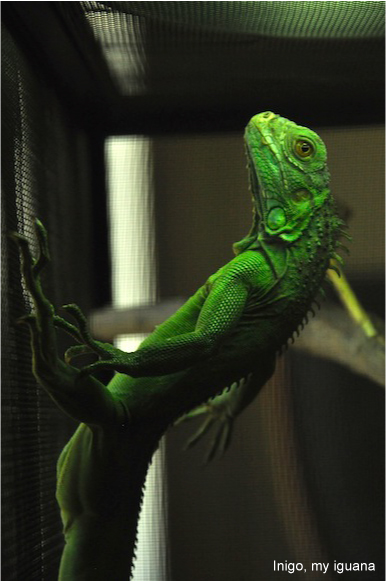
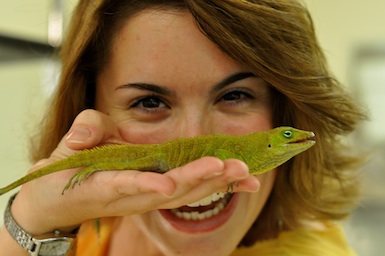
Students & Collaborators
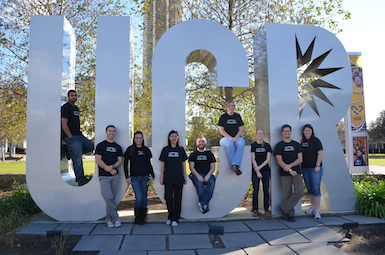 Graduate Students
Graduate Students
- Thomas Stroud - Master's Student - Fall 2020-present
- Claire Buchheit - Teacher-Scholar Program - Spring 2022
- Lex Thomas - Volunteer & Research Assistant - Fall 2020-Fall 2021
- Alicia Villalobos - Teacher-Scholar Program - Fall 2021
- Anizha Young - LSAMP Student - Summer 2021
- Sherlyn Lopez-Contreras - Teacher-Scholar Program - Spring 2021
- Alessandro Selvitella - Purdue University, Fort Wayne, Machine learning applications to biology and medicine, mathematical foundations of machine learning, statistics on manifolds, partial differential equations
- Tim Higham - University of California, Riverside, Comparative biomechanics and muscle physiology, primarily in herps
- Ted Garland - University of California, Riverside, Evolutionary physiology
- Aleksandra Birn-Jeffery - Queen Mary, University of London, Comparative biomechanics and kinetics
- Emily Kane - Georgia Southern University, Comparative biomechanics of locomotion and feeding in fishes
- Jeff Olberding - University of California, Irvine, Comparative biomechanics and muscle physiology in herps
- Bill Stewart - Whitney Laboratory for Marine Bioscience, Comparative biomechanics in fishes
- Clint Collins - University of California, Riverside, Comparative biomechanics and locomotor performance in herps
- Kevin Jagnandan - University of California, Riverside, Comparative biomechanics and tail autotomy
- Vicky Zhuang - University of California, Riverside, Functional morphology and biomechanics of gecko feet
- Jessica Tingle - University of California, Riverside, Functional morphology and biomechanics of sidewinding snakes
- Emily Naylor - University of California, Riverside, Functional morphology and functional ecology of tetrapods
- Emily Standen - University of Ottawa, Comparative and evolutionary biomechanics, primarily in Polypterus fishes
